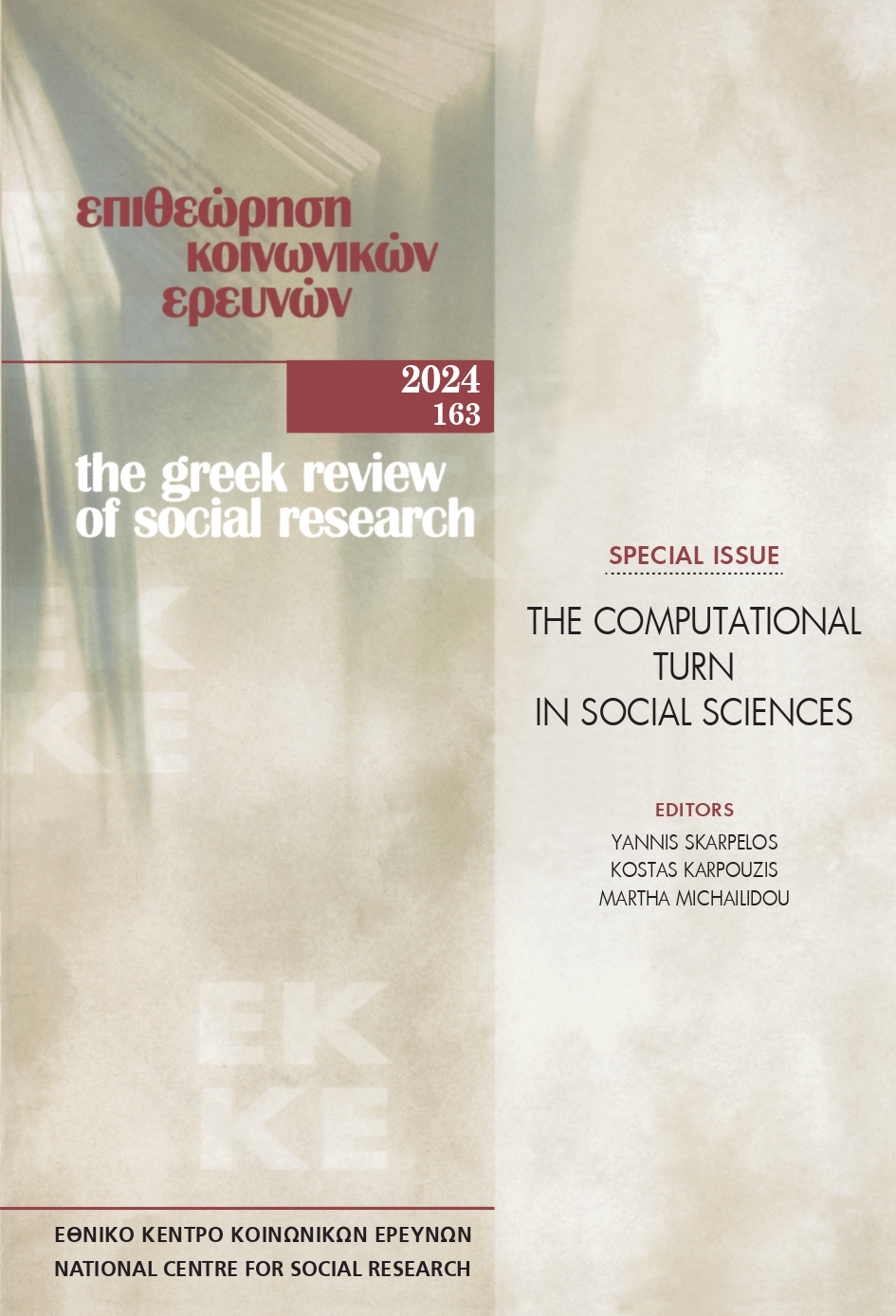Η πανδημία Covid-19 στην Ελλάδα υπό το πρίσμα μιας μεθοδολογικής συνέργειας: Συνδυάζοντας τις προσεγγίσεις της γλωσσολογίας σωμάτων κειμένων και της κριτικής ανάλυσης λόγου

Περίληψη
Τα τελευταία χρόνια οι υπολογιστικές προσεγγίσεις χρησιμοποιούνται όλο και περισσότερο στις κοινωνικές επιστήμες. Η παρούσα μελέτη διερευνά σε ποιο βαθμό ένας μεθοδολογικός τριγωνισμός της γλωσσολογίας σωμάτων κειμένων και της κριτικής ανάλυσης λόγου μπορεί να ρίξει φως σε καινοτόμες προσεγγίσεις και να προσφέρει νέες προοπτικές στην κοινωνική έρευνα. Τα μεγάλα σύνολα δεδομένων που μπορούν να εξεταστούν υπολογιστικά αποκαλύπτουν μοτίβα, τάσεις και συν-εμφανίσεις στοιχείων (Teubert & Krishnamurthy, 2007, σελ. 6). Η παρούσα έρευνα βασίζεται στην ανάλυση ενός σώματος κειμένων πολιτικού και επιστημονικού λόγου 720 κειμένων (Μάρτιος 2020 - Μάιος 2022) εκπροσώπων τριών βασικών θεσμών της κυβέρνησης του κόμματος της αξιωματικής αντιπολίτευσης και του Ελληνικού Οργανισμού Δημόσιας Υγείας. Ο διαμεσολαβημένος πολιτικός και επιστημονικός λόγος αποτέλεσε την κύρια πηγή πληροφόρησης σχετικά με την κρίση της πανδημίας της νόσου Covid-19. Οι υπολογιστικές τεχνικές επικεντρώνονται στην αναπαράσταση της πανδημίας μέσα από τις λεξιλογικές συνάψεις, προχωρώντας στη συνέχεια σε μια εκ του σύνεγγυς ανάγνωση. Σύμφωνα με τα αποτελέσματα, η κυβέρνηση κατασκεύασε ένα «αφήγημα διάσωσης», ενώ η αξιωματική αντιπολίτευση υποστήριξε τις προτεραιότητες της εργατικής τάξης. Οι εννοιολογικές μεταφορές σχετικά με την πανδημία ήταν διάχυτες τόσο στον πολιτικό όσο και στον επιστημονικό λόγο. Μελλοντικές έρευνες θα μπορούσαν να στραφούν στη συγκριτική μελέτη δειγμάτων από διαφορετικές χώρες.
Λεπτομέρειες άρθρου
- Πώς να δημιουργήσετε Αναφορές
-
Elafropoulos, D. (2024). Η πανδημία Covid-19 στην Ελλάδα υπό το πρίσμα μιας μεθοδολογικής συνέργειας: Συνδυάζοντας τις προσεγγίσεις της γλωσσολογίας σωμάτων κειμένων και της κριτικής ανάλυσης λόγου . Επιθεώρηση Κοινωνικών Ερευνών, 163, 37–66. https://doi.org/10.12681/grsr.38498
- Ενότητα
- Άρθρα

Αυτή η εργασία είναι αδειοδοτημένη υπό το CC Αναφορά Δημιουργού – Μη Εμπορική Χρήση 4.0.
Οι συγγραφείς των άρθρων που δημοσιεύονται στην Επιθεώρηση Κοινωνικών Ερευνών διατηρούν τα δικαιώματα πνευματικής ιδιοκτησίας επί των άρθρων τους, δίνοντας στο περιοδικό το δικαίωμα της πρώτης δημοσίευσης. Άρθρα που δημοσιεύονται στην Επιθεώρηση Κοινωνικών Ερευνών διατίθενται με άδεια Creative Commons 4.0 και σύμφωνα με την άδεια μπορούν να χρησιμοποιούνται ελεύθερα, με αναφορά στο/στη συγγραφέα και στην πρώτη δημοσίευση για μη κερδοσκοπικούς σκοπούς.
Το Εθνικό Κέντρο Κοινωνικών Ερευνών διατηρεί το δικαίωμα να δημοσιεύει, να αναπαραγάγει, να παρουσιάζει στο κοινό, να διανέμει και χρησιμοποιεί άρθρα που δημοσιεύονται στην Επιθεώρηση Κοινωνικών Ερευνών σε οποιοδήποτε μέσο και μορφή είτε μεμονωμένα είτε ως μέρη συλλογικών έργων, για όλο τον χρόνο διάρκειας προστασίας της πνευματικής ιδιοκτησίας και για όλες τις χώρες του κόσμου. Αυτό περιλαμβάνει ενδεικτικά και όχι αποκλειστικά το δικαίωμα δημοσίευσης των άρθρων σε τεύχη της Επιθεώρησης Κοινωνικών Ερευνών, αναπαραγωγής και διανομής μεμονωμένων αντιγράφων των άρθρων, αναπαραγωγής ολόκληρων των άρθρων σε άλλη έκδοση του Εθνικού Κέντρου Κοινωνικών Ερευνών, καθώς και αναπαραγωγής και διανομής των άρθρων ή περίληψης αυτών με χρήση πληροφορικού συστήματος αποθετηρίου.


